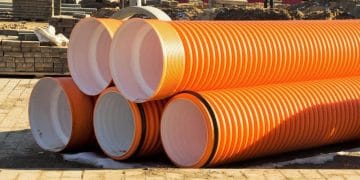NDT stands for non-destructive technology. Non-destructive refers to a type of inspection or testing that does not damage the product being inspected. NDT is used in a wide range of industrial activity, with new NDT methods and applications being continuously developed.
NDT methods are routinely applied in industries where the failure of a component would cause significant hazard or economic loss, such as in transportation, pressure vessels, building structures, piping, and hoisting equipment. Because NDT does not permanently alter the article being inspected, it is a highly valuable technique that can save both money and time in product evaluation, troubleshooting, and research. In most cases, NDT does not require the product to be opened or taken out of service (as most NDT methods are portable). This is particularly useful in industries such as oil and gas and aerospace.
NDT provides an additional level of insurance and safety to all metal products that are created. There are specific standards that steel needs to maintain, and these standards are particularly important in high liability industries such as aerospace. NDT ensures that these minimum specifications are maintained.
Why choose to be an NDT technician?
To become an NDT technician is a very important career choice! An NDT technician helps to protect people and industries from defects and potentially negligent or dangerous products. NDT plays a crucial role in everyday life and is necessary to assure safety and reliability. Typical examples are found in aircraft, spacecraft (shuttle), motor vehicles, pipelines, bridges, trains, power stations, refineries, buildings and oil platforms, which are all inspected using NDT.
How to become a technician
- NDT Training is a very important tool for any person interested in the NDT world. NDT training is provided in several parts.
- Generally, for the new initiate, there is a 40h course that must be taken (either in class or online).
- Once that is acquired, the student must get on-the-job or ‘practical’ training. This means that once an employer hires you on, you need to work as an ‘apprentice’ of sorts, for a few hundred hours to gain competency with the equipment.
- Once you’ve acquired both of these, you can apply for certification within your country or region.
Next steps
If you can’t get time off work, or can’t afford to travel to take these courses, the online option is a better route for you. Visit WorldSpec.org to get started.
If you prefer in-class training, visit Hellier NDT to get started. With three locations in the US (Anaheim, Houston, and New London), they can service all your training needs.
For a limited time, WorldSpec.org is offering an introductory discount of 10%. Simply enter ‘offshore10’ when registering online and the discount will be automatically applied to your receipt.














































